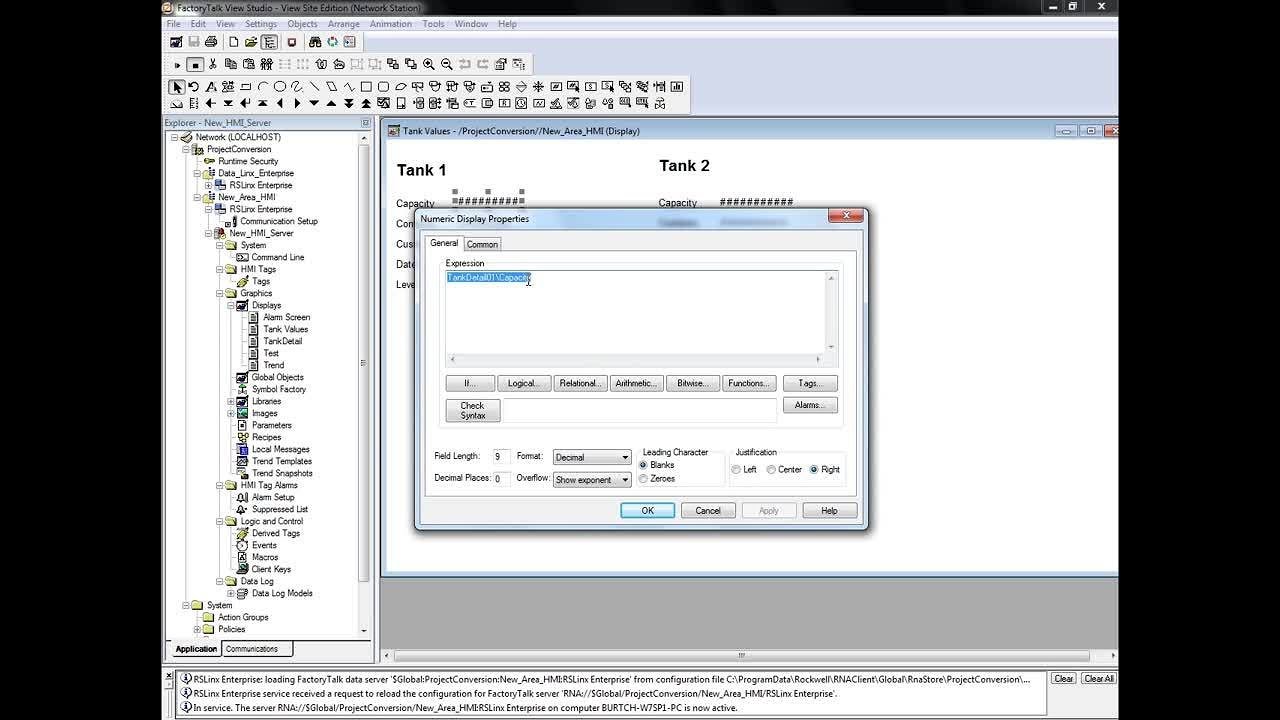

- #Rslogix 5000 addressing how to#
- #Rslogix 5000 addressing software#
- #Rslogix 5000 addressing code#
- #Rslogix 5000 addressing plus#
- #Rslogix 5000 addressing download#
and utilizes tag according to memory addressing.
#Rslogix 5000 addressing plus#
RSLogix 5000 is having ladder plus STL etc.
#Rslogix 5000 addressing software#
One of the biggest advantages of using this software is better management and maintenance of your code.
#Rslogix 5000 addressing code#
The RSLogix5 programming package is fully compatible with the programs created by the company’s DOS package, thus allowing the development of old code in the new platform. The ADD statement will then increment the value of our pointer. RSLogix 500 is actually ladder only and utilizes register according to memory addressing. This software will increase productivity and save significant time. The COP instruction will move all 7 elements of the SystemTime tag to FaultLog. Otherwise, we would fill up the fault log very quickly! Remember our pointer is at 0. The One Shot instruction will only execute the copy one time per alarm condition. 00 of Studio 5000 Logix Designer, RSLogix 5000 Emulate software has been renamed to. In the first rung, the XIC will be our fault condition.

These will be for the fault condition, and for a reset Now we will add the logic to make our Fault Log work. Here, we will use real I/O, but if you do not have a real world switch, create two BOOL tags that you can toggle manually. When finished, your tags should look like this: You will need to set dimension 0 to the value of 7 first. Notice the FaultLog tag is a 2 dimensional array (200 x 7).Īn easy way to create the 2-dimensional array is to click the elipsis next to DINT as shown: Please create the tags as follows: MyOneShot (BOOL) and FaultLog (DINT). First, we must create some tags that we can use in this exercise. Now that you understand how Indirect Addressing works, we will create a Fault Log. Also, put the pointer back to a value of 0 to prepare us for the next section. This will prevent a fault in our next section of this tutorial. When you are sure you understand how Indirect Addressing works, remove the MOV statement we just placed into your logic. Warning: If the pointer value attempts to access an address that does not exist, you will fault the processor! With a pointer value of 3, you will see a 9 in MyTag. you’re correct the NAT is translating PLC address of 192.168.200.130 to 10.31.48.110 so i put 10.31.48.110 as the hostname and tried leaving the connection path blank but I am still unable to connect. With a pointer value of 2 in this case, our MOV would place the value of 12 into MyTag. the ignition gateway is on the company network side.

Try this with a pointer having the values 2 through 6 watching the Controller tags until you are sure that you understand how the Indirect addressing is working. We’ll go to “Monitor Tags”, and make this change. If we change the value of the Pointer tag to 1, then the month is moved. Since the value of Pointer is 0, the source of the MOV statement is SystemTime, and the year is moved into “MyTag”. Next, we will add a simple MOV instruction to the MainRoutine. The data type of each tag will be “DINT”.

Since we’ve already created the SystemTime tag, create two more tags: “MyTag” and “Pointer”. We will use this array in the example below. In this tutorial, we copied the time into an array of 7 elements. Here we give the module the name of Consumer and set the IP address of that controller. When we click on create, we will be shown the new module's general properties.
#Rslogix 5000 addressing how to#
If you have not yet done so, follow the tutorial on how to access the system time. All we must do then is select ours from the list and click create. General Explanation of Indirect Addressing I will assume that you are working on a test station with a new project in this example. Then, we will build a fault log for the purpose of troubleshooting. In this tutorial, we will start off with a simple demonstration of how indirect addressing works in the ControlLogix processor. This would tell us how many faults occurred, and the exact time of each fault. The next day, we would then look back at the fault log. Each time a fault occurs, we want to log the system time to a different memory location. For whatever reason, RSLogix 5000 will often move very slowly through the Controller Tags or Program Tags if you are on the Edit Tags tab.
#Rslogix 5000 addressing download#


 0 kommentar(er)
0 kommentar(er)
